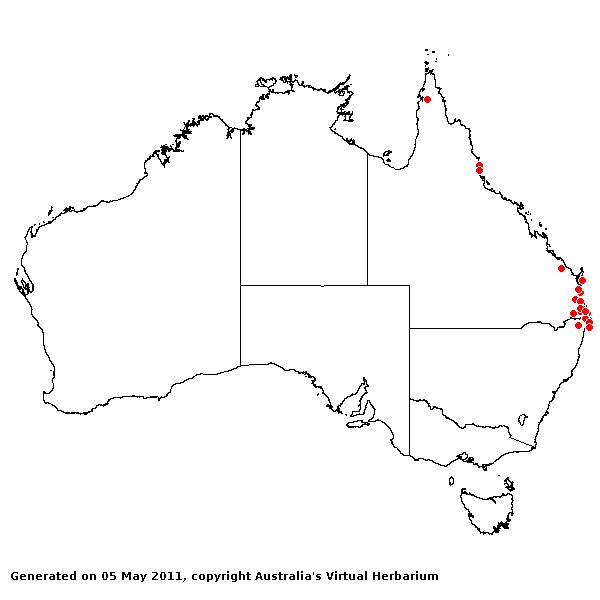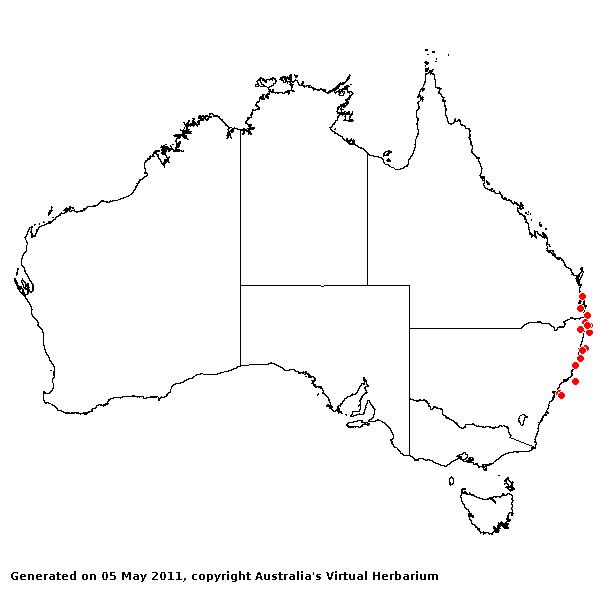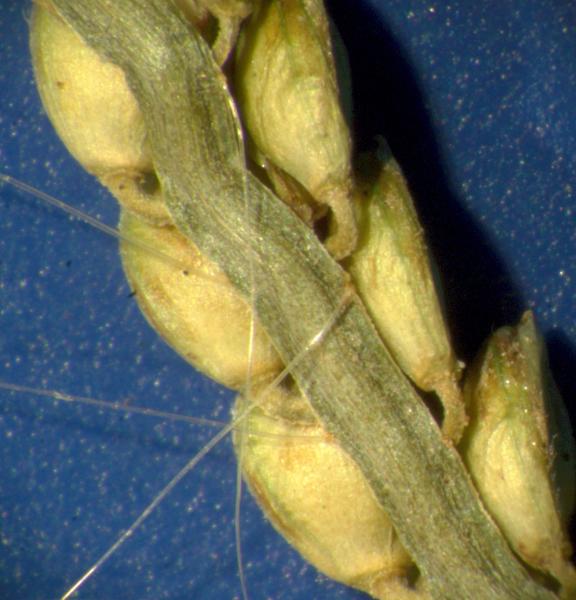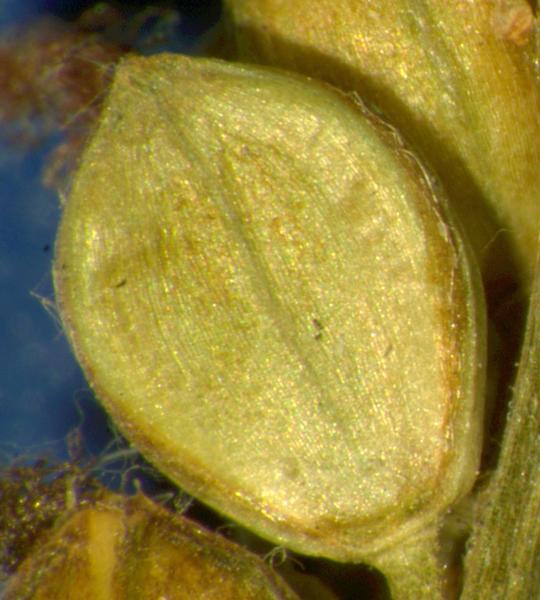Paspalum mandiocanum* Trin. Gram.
Panic. 113 (1826).
Classification. (GPWG 2001) : Subfamily
Panicoideae. Paniceae.
Type of Basionym or
Protologue Information: HT: G.H. von Langsdorff s.n., Brazil: prope
Mandiocam, in siccis (LE-TRIN-0489.02 (& fig.); IT: US-951095 (fragm. ex
LE-TRIN)). fide Chase, Mandiocca is the name of Langsdorff'estate north of Rio
de Janeiro..
Recent synonyms:
[P. wettsteinii auct].
Key references
(books and floras): [2008] S.W.L.Jacobs, R.D.B.Walley & D.J.B.Wheeler, Grasses
of New South Wales (328 as P. wettsteinii).
Illustrations:
[2008] S.W.L.Jacobs, R.D.B.Whalley & D.J.B.Wheeler, Grasses of New South
Wales, 4th edn (328).
Habit.
Perennial. Culms 80–200 cm tall, 2–5 -noded. Mid-culm nodes glabrous.
Leaf-sheaths glabrous on surface. Ligule an eciliate membrane, 2 mm long.
Leaf-blades 20–40 cm long, 8–15 mm wide. Leaf-blade surface scabrous, glabrous.
Inflorescence.
Inflorescence compound, a panicle of racemes. Racemes 8–20, 3–12 cm long, 2–4
mm wide. Central inflorescence axis 20 cm long.
Spikelets.
Spikelets pedicelled. Fertile spikelets 2-flowered, the lower floret barren
(rarely male), the upper fertile, comprising 1 basal sterile florets,
comprising 1 fertile floret(s), without rachilla extension, obovate, dorsally
compressed, 2.5–3 mm long.
Glumes. Glumes
thinner than fertile lemma. Upper glume elliptic, membranous, without keels, 3
-nerved. Upper glume surface glabrous. Florets. Basal sterile florets 1,
barren, without significant palea. Lemma of lower sterile floret 100 % of
length of spikelet, membranous, 3 -nerved.
Fertile lemma 2.5–3 mm
long, without keel. Anthers 3.
Continental
Distribution: Australasia and South America.
Australian
Distribution: Queensland, New South Wales.
Queensland:
Port Curtis, Wide Bay, Moreton. New South Wales: North Coast, Central
Coast.
Notes.
Previously material place this species was wrongly named P. wettsteinii.
However this species (now regarded as a synonym of P. virgatum) has larger
spikelets which are hairy. This species has recently become a noted weed in
Queensland, where it was thought to have good properties as a pasture grass.





